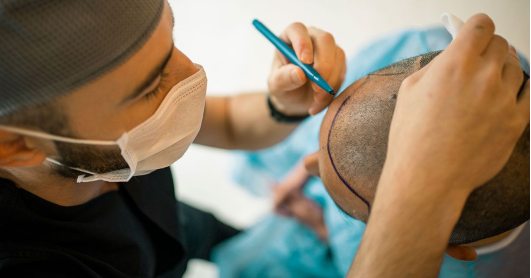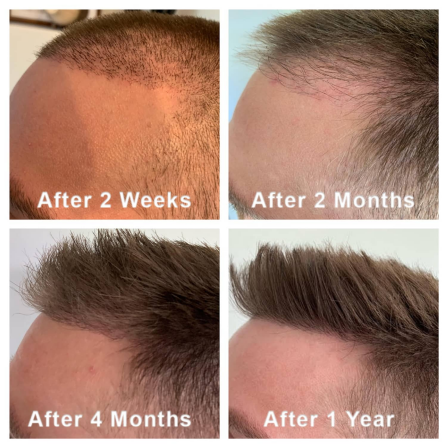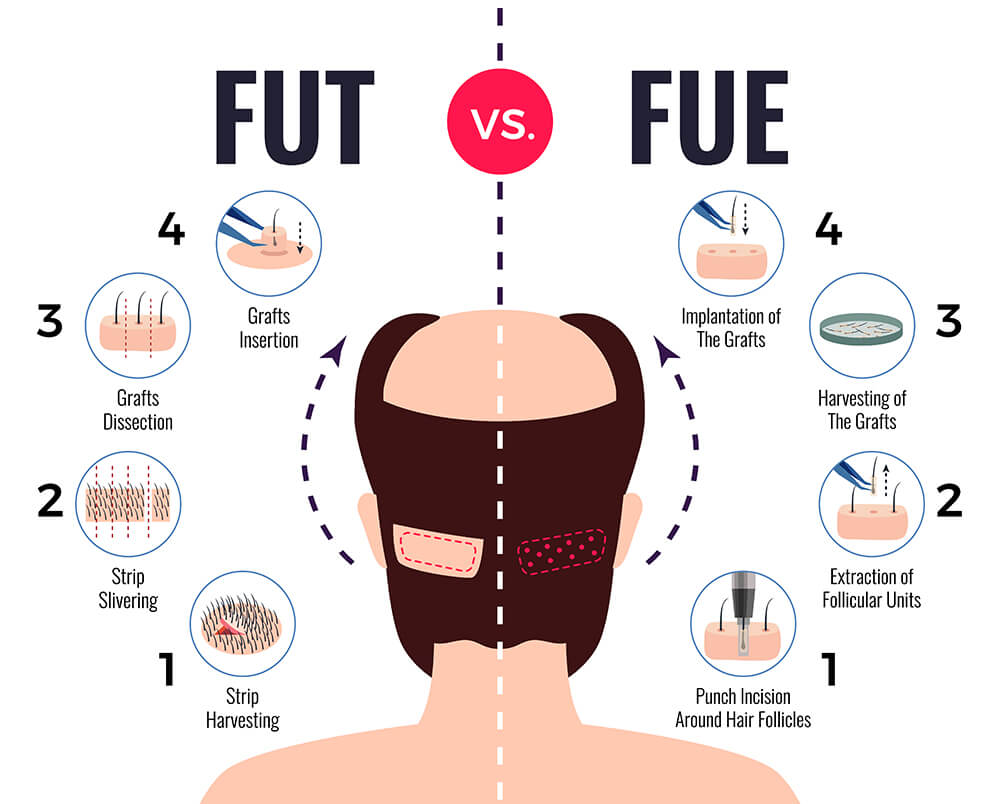Guide to Restoration and Recovery
In the realm of addressing hair loss concerns, hair transplantation emerges as a powerful beacon of hope, offering a potential solution for those on a quest to reclaim their crowning glory. This in-depth guide delves into the multifaceted aspects of hair transplantation, providing a wealth of information on optimal age groups, suitable scalp conditions, the often-challenging transition periods, the cutting-edge techniques prevalent in the United States and Europe, as well as the important considerations of approximate costs. Additionally, it concludes with essential insights for prospective patients, empowering them to make informed decisions on their journey towards hair restoration.

Optimal Age Groups for Hair Transplantation
Hair transplantation is most effective for individuals in their late 20s and beyond. By this stage, hair loss patterns often begin to stabilize, making it a more opportune time for the procedure. However, younger patients experiencing premature hair loss should not be discouraged. Consulting with specialized hair restoration experts is crucial in these cases. These professionals can assess the individual's specific situation to determine candidacy and provide valuable insights on the potential for sustainable long-term results. For instance, a detailed examination of the underlying causes of premature hair loss can help guide treatment decisions. In some cases, lifestyle modifications or medical interventions may be recommended prior to considering hair transplantation.
Scalp and Hair Density Factors
Successful candidates for hair transplantation typically exhibit certain characteristics that contribute to a favorable outcome. Good scalp laxity is one such factor. This refers to the flexibility and elasticity of the scalp, which affects the ease of harvesting and transplanting follicles. A more lax scalp allows for smoother procedures and better placement of transplanted hair. Additionally, sufficient donor hair density is essential. The availability of a healthy supply of donor hair directly influences the coverage and natural appearance post-procedure. A comprehensive assessment of donor hair density involves evaluating not only the quantity but also the quality of the hair. Factors such as hair thickness, texture, and color play a role in determining the overall aesthetic result.
Navigating the Transition Period
The journey of hair transplantation is not without its challenges, particularly during the transition period. Post-transplantation, patients may experience a temporary shedding phase within 2 to 4 weeks. This is a normal part of the process as transplanted follicles adjust to their new environment. It can be a source of concern for some patients, but understanding that this is a natural occurrence can help alleviate anxiety. Visible hair growth typically commences within 3 to 6 months, although it may be subtle at first. Over time, as the hair continues to grow and mature, full results become evident between 12 to 18 months. This extended timeline requires patience and careful follow-up care to ensure optimal healing and growth.

Technological Advances in the US and Europe
The field of hair transplantation has witnessed significant technological advancements in recent years, particularly in the United States and Europe. Two of the most prominent techniques employed are Follicular Unit Transplantation (FUT) and Follicular Unit Extraction (FUE).
- Follicular Unit Transplantation (FUT): This technique involves extracting a strip of scalp from the donor area and carefully dividing it into individual follicular units for transplantation. FUT is ideal for patients requiring a large number of grafts in a single session. It allows for efficient harvesting and transplantation of a significant volume of hair follicles. However, it does result in a linear scar at the donor site, which may be a consideration for some patients.
- Follicular Unit Extraction (FUE): FUE utilizes micro-punch tools to harvest individual hair follicles directly from the donor area. This minimally invasive approach offers several advantages, including no linear scarring and shorter recovery times. It is particularly appealing to those who are concerned about visible scars or who desire a quicker return to their normal activities. However, FUE may be more time-consuming and may not be suitable for patients with extremely limited donor hair.

Cost Considerations and Financial Planning
The cost of hair transplantation can vary significantly depending on several factors. The chosen technique plays a major role, as FUT and FUE may have different price points. Geographic location also influences costs, with procedures in major cities or more developed regions often commanding higher prices. Additionally, the number of grafts required is a significant determinant. Generally, in the United States and Europe, prices can range from $4,000 to $15,000 per procedure. Other factors such as the experience and reputation of the surgeon and the clinic also impact pricing. Prospective patients should carefully research and compare different providers to ensure they are getting the best value for their investment. Financial planning may involve exploring options such as medical financing or insurance coverage, if applicable.
Specialized Considerations and Recovery Insights
- Pre-operative Preparation: A comprehensive consultation and medical evaluation are essential steps in the hair transplantation process. During this phase, the surgeon will assess the patient's candidacy, discuss realistic expectations, and outline the potential risks and benefits. Patients may need to discontinue certain medications or supplements that could interfere with the procedure or healing process. Avoiding alcohol and smoking in the weeks leading up to the surgery is also recommended to optimize healing and minimize complications. Additionally, patients should be prepared mentally and emotionally for the journey ahead, understanding that hair transplantation is a significant investment in both time and resources.
- Post-operative Care: Follow-up appointments are crucial for monitoring progress and addressing any concerns promptly. Patients should adhere strictly to prescribed care routines, which typically include maintaining proper scalp hygiene. This may involve gentle cleansing and avoiding harsh products that could irritate the scalp. Avoiding strenuous activities that could disrupt graft placement is also important. For example, heavy lifting or intense exercise should be avoided for a certain period after the procedure. Wearing a protective cap or scarf outdoors can help protect the transplanted area from the sun and other environmental factors.
Personal Opinion
Hair transplantation represents a transformative solution for individuals seeking to regain natural hair growth and enhance their self-confidence. By understanding the intricacies of age suitability, scalp conditions, recovery phases, and financial considerations, patients can embark on their journey with informed decisions and realistic expectations. It is important to approach hair transplantation as a collaborative process between the patient and the medical team. Open communication, adherence to post-operative care instructions, and patience during the recovery period are key to achieving the best possible results.
Embark on your path to renewed hair and self-assurance with expert-guided insights into the art and science of hair transplantation!



